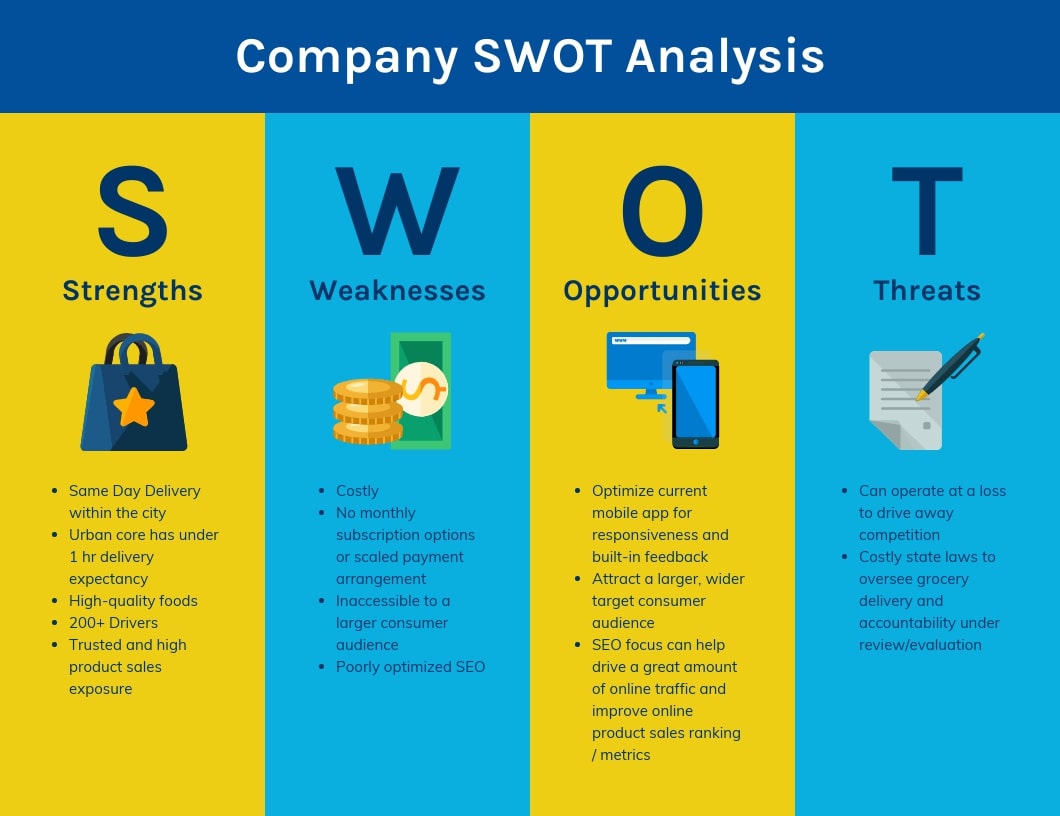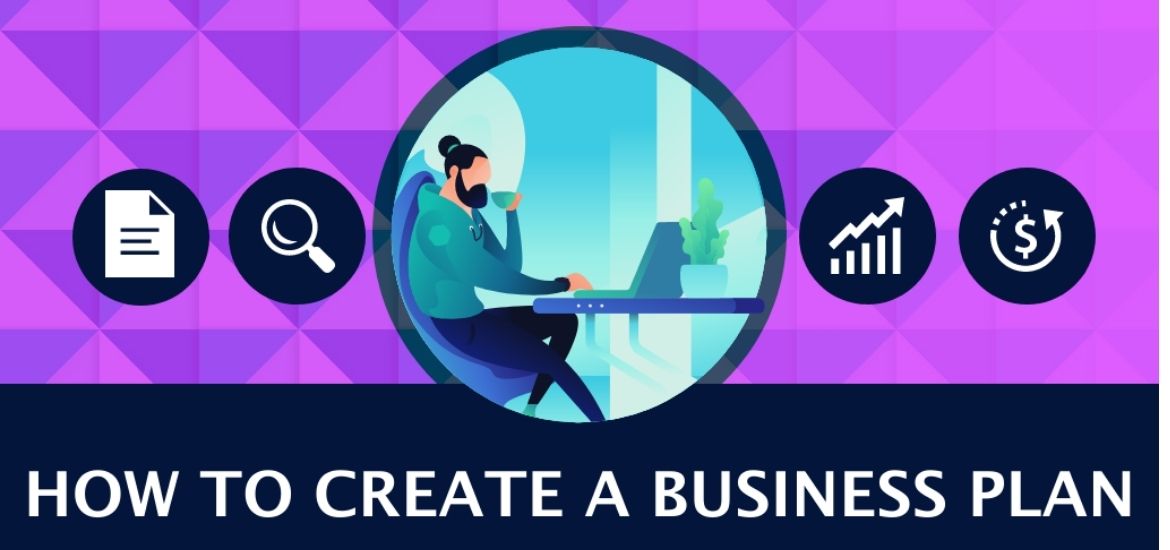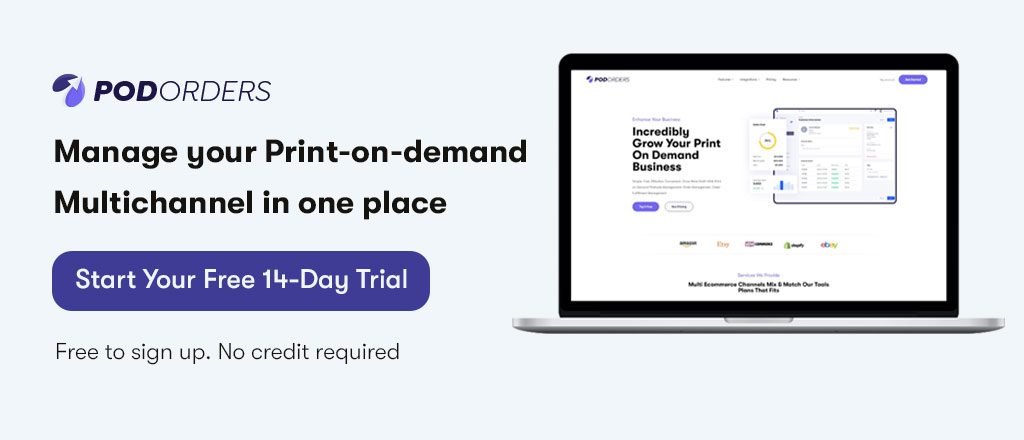There are many reasons to research how to write a plan for business online as a good business plan can help you clarify your strategy, identify potential roadblocks, decide what you’ll need in the way of resources, and evaluate the viability of your idea before you really start your business journey.
Your to-do list is a mile long and filled with hundreds of tasks when you jump into starting a new business, including opening social media accounts, creating ad campaigns, creating marketing strategies, etc. Not every business succeeds from the beginning, many founders find value in taking time to step back, research their idea and the market they’re looking to enter and come up with strategies for their business growth in the long term. That’s where this guide to how to make a plan for business online comes in.
Having a plan for business online helps you keep the business on track with sales targets reduce risk as well as to measure and manage your priority areas of focus.
1. The Importance Of Making A Plan For Business Online

A business plan will help you evaluate the feasibility of a business. Besides, there are also several other compelling reasons to learn how to create a plan for business online including.
- Clarify ideas: Writing out your plan is an invaluable practice that helps you clarify your ideas and understand the scope of your business, as well as calculate the amount of time, money, and resources you’ll need to get started running your business.
- Evaluating ideas: Evaluating ideas is a necessary step particularly if you’ve got multiple ideas in mind. Having a rough business plan for each idea will generally help you put your time and energy into the ones with the highest potential of success. By doing this way, no wasting time ever.
- Make more strategic decisions: Doing research for writing a plan for business online is very crucial. You will need to research two main things including your potential customer and competitors. That information will allow you to make more strategic decisions and reduce the time for useless action.
- Recruiting: Making a plan for business online is one of the easiest ways to communicate your vision to potential new hires. This also allows you to build their confidence in the venture, especially if you’re in the early stages of business growth.
2. Plan For Business Online: Step-By-Step Guideline

2.1 Establishing The Basics
A good executive summary is one of the most crucial sections of your plan, here’s what your business plan’s executive summary should include:
2.1.1 Choose an ideal product
The first step in making a plan for business online is deciding what to sell. You can consider selling a product or service related to your current field of work as you have already had the knowledge of that major, which will help you start your business more effectively. Or, you also can create a plan for business online based on your hobby or interest that you have outside of work.
2.1.2 Define your business type
eCommerce platforms like Amazon, Etsy, or eBay should be on your list if you’re selling goods. You also can create your own website to sell your products with your own brand, but this approach could be more expensive.
Most businesses offering services work through an established website. This gives you the credibility that comes with an established name but also limits your freedom of creation. It is important to weigh the costs and benefits of different options before deciding where to run your business from.
2.1.3 Clarify your goals
Clarify your goals to have a deep view of what exactly are you selling? Your products you sell? What are your goals, metrics, and timebound to complete? Figure out your goals for business growth and expansion also plays a crucial role.
2.2 Market Analysis

Choose the right market for your products with plenty of customers who need your products there helps you have a head start on success. In other words, choosing the wrong market, or the right market at the wrong time can make you so struggling for each sale.
That is where market analysis comes in. This is a key section of creating your plan for business online. The market analysis should include an overview of the market size for your product, an analysis of your business’s position in the market, and an overview of the competitive landscape. Without this analysis, you can not make a good plan for business online.
2.2.1 Calculate Potential market size
The potential market can be simply understood as an estimate of how many customers need your product. Since market analysis can be a daunting process, take considering these tips to begin your research:
- Understand your ideal customer: Getting to know the ideal customer profile is crucial, particularly since this information relates to demographics.
- Research relevant industry trends and trajectories: For example, if you’re selling fitness equipment, you should figure out trends in gym memberships and overall health among your target audience.
- Make informed guesses: Having perfect, complete information about the size of your total addressable market is generally impossible. You also can estimate the size of your market based on as many verifiable data points as necessary for a confident guess. Some reliable sources for you to consult for market data include government statistics offices, and respected news outlets covering your industry.
2.2.2 Doing a SWOT analysis
Doing SWOT analysis is another way to guide your thinking, which means you will perform your Strengths, Weaknesses, Opportunities, and Threats. By considering these qualities, you can understand your position in the market and build a plan for business online. Having a business plan will help you take advantage of your strengths, eliminate your weaknesses, and address threats and opportunities head-on.

So this is an important step, so first, you need to start identifying your own strengths and weaknesses as they apply to the business. For example, perhaps you’re talented and skilled in providing unique products for home cleaning but lack the ability to effectively promote your brand.
When it comes to opportunities, consider your competitive advantage over other businesses. For example, you may want to answer the question is your product/service cheaper, better quality than existing ones?
For threats, find out the competition and regulatory issues that may affect your business. Also doing research to know if there are any barriers to entry in your market.
2.2.3 Competitive analysis
Competition in the market is inevitable even when you offer a new innovative product. So it’s important to have a competitive overview in your plan for business online. Doing market research is necessary to find and build a list of a few companies you consider direct competitors. Then explain how you plan to differentiate your products and business from theirs.
For example, if you’re starting a jewelry business, your competitive differentiation could be that, unlike other competitors, all your products are hand-made and each of them has only one. There are three overarching factors that you can use to differentiate your business:
- Cost leadership: Maximizing profits by offering lower prices than the majority of your competitors. A good in-demand product that comes at an affordable price will absolutely attract customers.
- Differentiation: If you can do anything to lead the price, make your product or service distinct from the current cost leaders in your industry standing out based on your uniqueness.
- Segmentation: You focus on a very specific, or niche, target market with a smaller and higher-quality audience before expanding the market. You can take companies like TomboyX and Heyday Footwear as an example. They are the ones who approached this method successfully.
2.3 Customer Segmentation
Your ideal customer is basically the foundation of your marketing plan. To have a holistic overview of your ideal customer, you need to describe a number of general and specific demographic characteristics including:
- Where they live
- Their age range
- Their level of education
- Some common behavior patterns
- When they’re online the most
- What technology do they use
- How much they earn
- Their values, beliefs, or opinions
This information will base on what you’re selling. Having specific information about your target customer lets you know clearly who you’re trying to reach.
2.4 Planning Your Digital Website
2.4.1 Select a domain name

Choose a domain name that’s simple and refers to your industry, product, or service. You can check this by typing related terms into search engines to see if they are already in use. Try different combinations of terms to find one that doesn’t exist, make sure your domain name is simple, and as short as possible.
2.4.2 Register or purchase your domain name
You can register a domain name for an online business if it doesn’t already exist (you also can purchase a domain name that has already been created but is no longer in use). Make sure that the domain is legally for purchasing before you spend money in the name.
2.4.3 Find a reliable web host
Finding a website host is important. Make sure it offers reliable technical support, plenty of storage space, and the server options you need for your site to run efficiently. Your hosting needs will vary depending on your demand and business, so explore all your options to find the best hosting package.
2.4.4 Plan out your webpage design
As an online business, your website is like your storefront, therefore, if your storefront looks shoddy, it will drive away customers. Take seriously this step and start laying out an effective, optimized, and professional website by drawing how you want it to work and look. Be sure your navigation is simple with product/service description pages easy to get to and void using too many graphics, audio, and video.
Don’t forget that your website needs to be responsive that will look stunning in any device and screen. You can learn from existing websites of the same type but don’t copy any designs. Remember, you can always hire a professional to design your website, this may be expensive, but necessary to operating a successful online business.
2.5 Marketing Plan

Your plan for business online should outline your current and your future strategies. Remember to focus on how your ideas are a fit for that ideal customer.
In general, most marketing plans include four key subject information:
- Price: How much do your products cost?
- Product: What are you selling and how do you differentiate from others in the market?
- Promotion: How will you get your products in front of your potential buyers?
- Place: Where will you sell your products? build your own website or use eCommerce platforms?
When it comes to reaching new buyers, you can use your ideal customer as a starting place to figure out how you will reach them. Most brands and businesses will use ads platform at first to reach their audience. The important thing is to determine where you will advertise and what your advertisements will say.
For example, Instagram is one of the most popular social media platforms recently and that makes sense if you want to implement marketing plans and invest heavily here. But you must find out whether your ideal customers use this app or not. It will be a wasting investment on Instagram if your customers aren’t there.
You also should look carefully at other places online like websites, blogs, etc where your ideal customer might spend time as these could be ideal places to place advertisements. Don’t forget to clarify the message you want customers to hear about your offering and craft more strategies for appealing to and retaining customers.
2.6 Logistics And Operations Plan
Logistics and operations are the processes to make your ideas a reality. If you’re writing a plan for business online, this is still an important section to consider seriously. All parts of your planned operations include:
- Suppliers. This is where you get the raw materials you need for production, or where your products are produced.
- Production: You will produce on your own or from a third party? Time for production.
- Facilities: You need to decide where will you and any team members work.
- Equipment: Consider what tools and technology that you need to be up and running, which may include everything from computers to lightbulbs, etc.
- Shipping and fulfillment. You can consider handling all the fulfillment tasks in-house or using a third-party fulfillment partner. Choosing the best provider to meet your demand – is the best for you.
- Inventory: You need to set up an inventory to store your products.
Having clear information in this section will help you get a solid understanding of your supply chain and strong contingency plans in place to cover potential uncertainty.
2.7 Financial Plan
A business will live or die based on its financial health. The level of detail required in your financial plan typically includes three major views of financials: an income statement, a balance sheet, and a cash-flow statement.
- Income statement: Your income statement is designed to give a look at your revenue sources and expenses in a period of time. Those two pieces of information help you see the profit or loss of your business during that time.
- Balance sheet: A balance sheet offers an overview of how much equity you have in your business. You also need to list all your business assets, all your liabilities in this balance sheet to provide a snapshot of your business’s shareholder equity, which is calculated as:
Equity = Assets – Liabilities
- Cash flow statement: The cash flow statement is similar to the income statement. The only important difference is that the cash flow statement can take into account when revenues are collected and when expenses are paid. If the cash-in is greater than the cash-out, your cash flow is positive. And the opposite side is negative cash flow.
3. Conclusion
Creating a plan for business online is not easy at all as sometimes your idea may be too risky or there’s no market. So you need to research every point seriously, or you may aim for small business ideas to get started with little money and bypass traditional startup costs.
Read more
- Top 8 Fantastic Ideas To Make Money On Tik Tok
- Top 10 Amazon Pricing Strategies That Every Seller Should Know
- Woocommerce vs Shopify Comparison | Which Ecommerce Platform is the best for POD
- Overview Of 10 Best Multi-Channel eCommerce Software in 2021
- eBay Pricing Strategy: Top Things You Need To Know/a>

